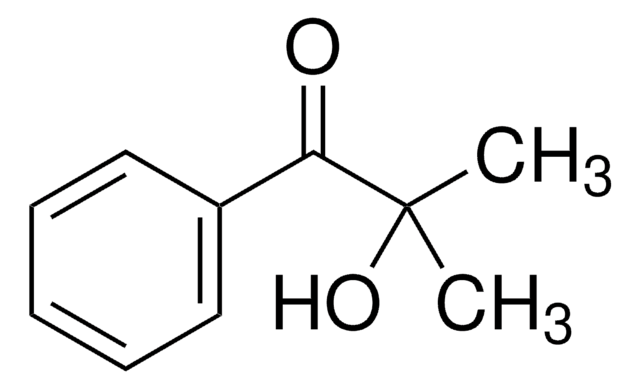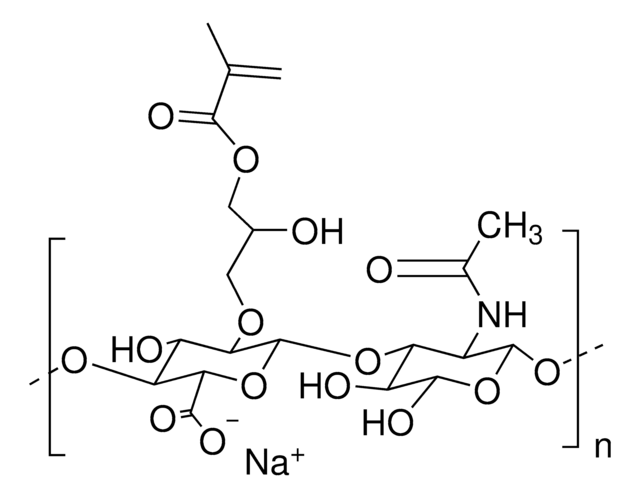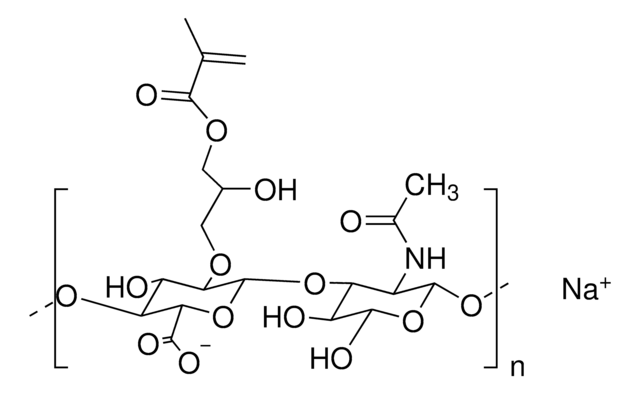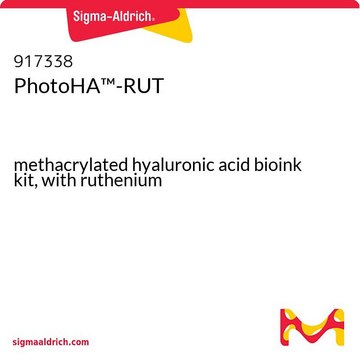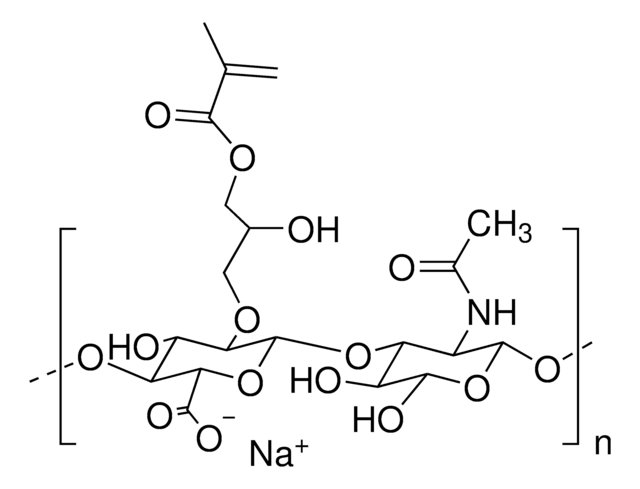917079
PhotoHA™-IRG, methacrylated hyaluronic acid bioink kit, with Irgacure
Sinónimos:
3D Bioprinting, Bioink, HAMA, Hyaluronic acid
About This Item
Productos recomendados
description
Methacrylated hyaluronic acid:
Degree of methacrylation: ≥ 45-65%
Quality Level
sterility
sterile; sterile-filtered
mol wt
Mw 100-150 kDa
composition
Product components :
Methacrylated hyaluronic acid (100 mg)
Irgacure photoinitiator (100 mg)
storage temp.
−20°C
Application
Legal Information
hcodes
pcodes
Hazard Classifications
Aquatic Chronic 2
Storage Class
11 - Combustible Solids
Certificados de análisis (COA)
Busque Certificados de análisis (COA) introduciendo el número de lote del producto. Los números de lote se encuentran en la etiqueta del producto después de las palabras «Lot» o «Batch»
¿Ya tiene este producto?
Encuentre la documentación para los productos que ha comprado recientemente en la Biblioteca de documentos.
Nuestro equipo de científicos tiene experiencia en todas las áreas de investigación: Ciencias de la vida, Ciencia de los materiales, Síntesis química, Cromatografía, Analítica y muchas otras.
Póngase en contacto con el Servicio técnico
